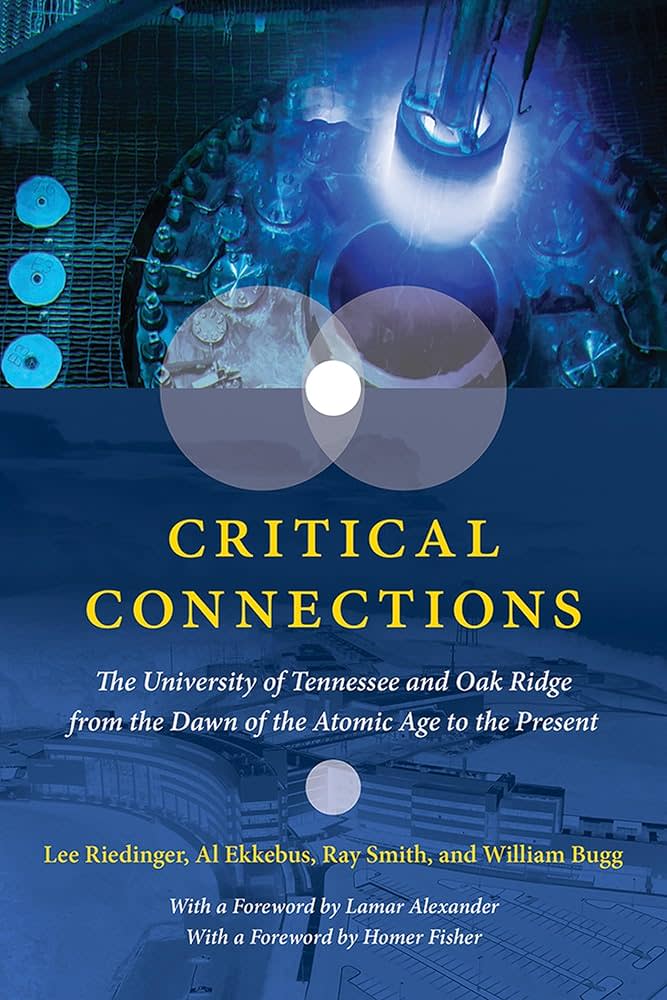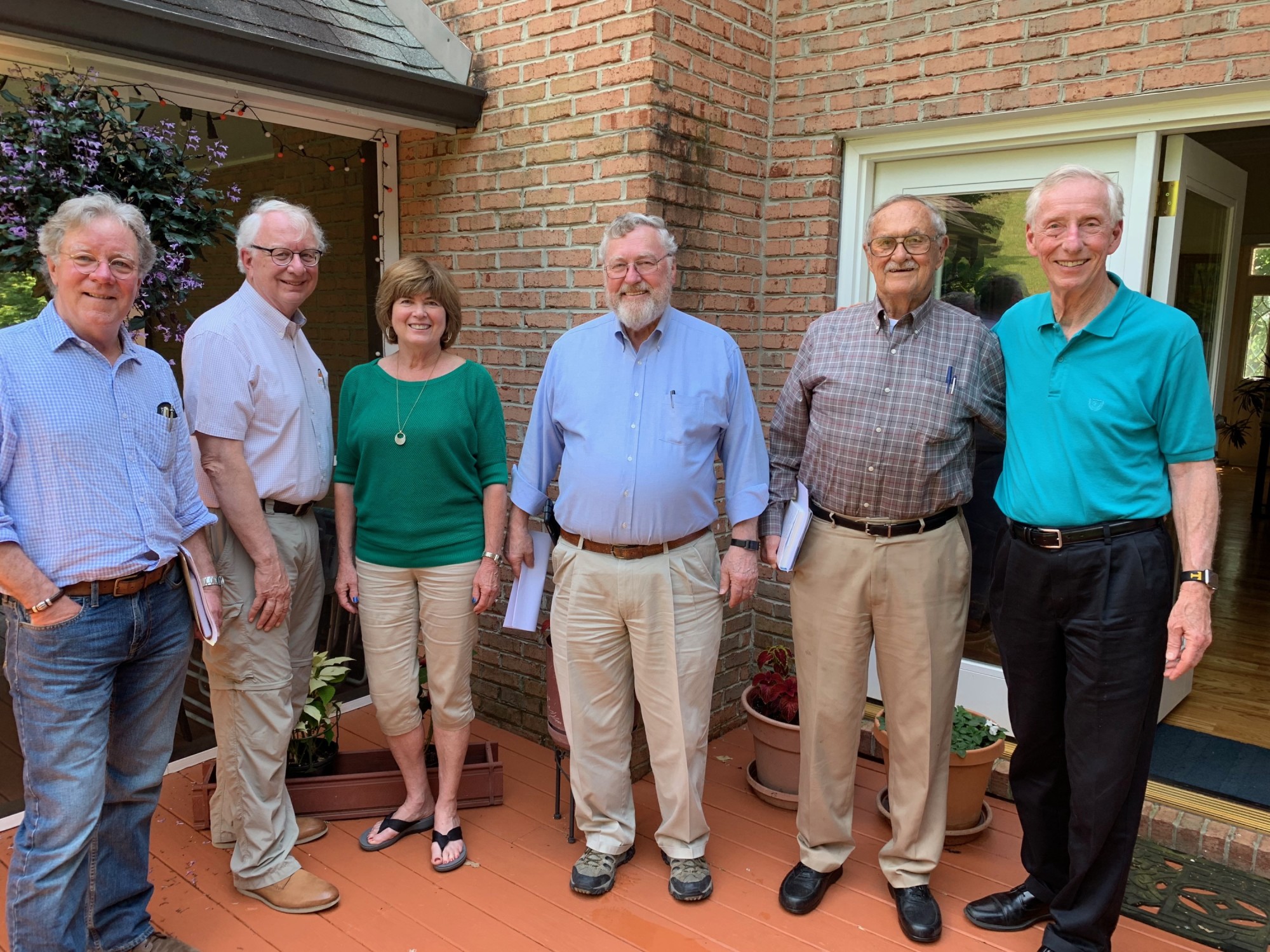ETEC - Lee Riedinger & Co-Authors, speaking about Critical Connections: The University of Tennessee and Oak Ridge from the Dawn of the Atomic Age to the Present

ETEC - Lee Riedinger & Co-Authors, speaking about Critical Connections: The University of Tennessee and Oak Ridge from the Dawn of the Atomic Age to the Present
Friday, November 8, 2024 (7:30 AM - 8:30 AM) (EST)
Description

Join us at ETEC in person or virtually on Friday, November 8 at 7:30am to hear from Lee Riedinger and two of his co-authors (Al Ekkebus and Ray Smith), speaking about Critical Connections: The University of Tennessee and Oak Ridge from the Dawn of the Atomic Age to the Present. This will be a panel type program led by Alan Lowe from the American Museum of Science and Energy. Co-author William Bugg will be unable to attend. The book summary and editorial information is below.
No registration is necessary for in-person attendance.
Click here to register for the VIRTUAL meeting (note, this is a NEW link for the 2024 ETEC Friday morning meetings):
https://tennessee.zoom.us/meeting/register/tZctdu2vqzwiHNMa_b5aisjx0xKW2eP4C6mY
For more information about ETEC’s weekly meetings, click here.
Visit the Find Us page for the meeting location, address, and map.
This month's ETEC Friday Morning Meeting Series are sponsored by Strata-G.
 Critical Connections: The University of Tennessee and Oak Ridge from the Dawn of the Atomic Age to the Present.
Critical Connections: The University of Tennessee and Oak Ridge from the Dawn of the Atomic Age to the Present.
The bombing of Pearl Harbor set off a chain of events that included the race to beat German scientists to build the atomic bomb. A tiny hamlet tucked away in the southern Appalachians proved an unlikely linchpin to win the race. The Manhattan Project required the combination of four secret sites—Clinton Laboratories, Y-12, K-25, and S-50—75,000 workers, and the nation’s finest scientists to create the Secret City, Oak Ridge. From the beginning, the effort was aided by the nearby University of Tennessee, which provided expertise to make the weapon possible. Following World War II, it was not clear what role this huge research and development program would play, but pioneering scientists and administrators were determined that one option—dismantling the whole thing—would not happen.
Critical Connections chronicles how Oak Ridge National Laboratory (ORNL), the Y-12 National Security Complex, and their partners became outstanding examples of the military-industrial-educational complex from the Cold War to the present day. At the beginning of the 1950s, Oak Ridge became a flourishing, less-secret city, and the authors show how, decade by decade, ORNL became the source of major breakthroughs in physics, biology, computing, and other fields—and how these achievements required ever-closer connections with UT. By the mid-1990s, after many successful joint initiatives between UT and ORNL, UT was poised to compete to become the manager of ORNL. In 2000, UT-Battelle LLC won the bid from the Department of Energy: UT was charged with providing scientific direction and key personnel; its partner Battelle would oversee ORNL’s operations and chart its technology direction.
The authors highlight the scientific developments these connections have brought, from nanotechnology to nuclear fission, from cryogenic experiments on mice to the world’s fastest supercomputer. The partnerships between a university, a city, and federal facilities helped solve some of the greatest challenges of the twentieth century—and point toward how to deal with those of the twenty-first.
Editorial Reviews
Review
– Jack Barkenbus, former director of the UT Energy, Environment and Resources Center
Lee Riedinger and his colleagues have written a solid work on the evolution of the partnership between the University of Tennessee, Oak Ridge National Laboratory, and the broader Oak Ridge community since the days of the Manhattan Project. It explores new territory that hasn’t been chronicled before.
– Jim Campbell, past president, East Tennessee Economic Council and former editor, The Oak Ridger
About the Author
LEE RIEDINGER is former vice chancellor for research at the University of Tennessee, Knoxville.
AL EKKEBUS is a former outreach leader for neutron science at Oak Ridge National Laboratory.
RAY SMITH is the Oak Ridge historian formerly at Y-12.
WILLIAM BUGG is former head of the Physics Department at the University of Tennessee, Knoxville. (will not be able to attend)

From left to right are David Brill (editor), Al Ekkebus, Mary Zuhr (editor), Ray Smith, Bill Bugg, and Lee Riedinger. This was taken at Lee's house five years ago as they were starting this project.
Images












1201 Oak Ridge Turnpike
Oak Ridge, TN 37830 United States
Click here to register for the VIRTUAL version of the meeting: https://tennessee.zoom.us/meeting/register/tZctdu2vqzwiHNMa_b5aisjx0xKW2eP4C6mY
You will find us at the intersection of Rice Rd and Rider Rd, just off of S Rutgers Ave across from ORNL Corporate Headquarters.
The Outreach Center is located on the back corner of the building on the Applebee’s side. The entrance faces the Quality Inn and Applebee's.
Look for an awning and sign that says University of Tennessee Outreach Center. The main entrance of the ETEC Office will be locked.
Hailey Lewis
Complimentary coffee, bagels, muffins and pastries served.
